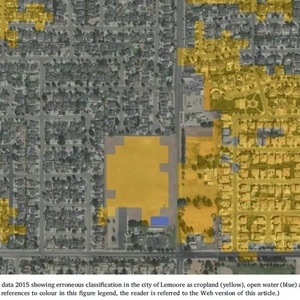New study exposes absurdity of NWF land use change claims

Source: Renewable Fuels Association
April 9, 2019
BY The Renewable Fuels Association
A new study published in the academic journal Biomass and Bioenergy exposes the fatal methodological flaws and erroneous conclusions regarding biofuels and land use change (LUC) found in recent studies paid for by the National Wildlife Federation. In addition, the new analysis found that U.S. biofuels expansion has not caused a detectable increase in the U.S. food prices.
“The real-world data showed no evidence of food price increases or other lands converting to agriculture because of biofuel,” according to the study, which was conducted by scientists at the University of Idaho and USDA. The research was funded by the National Institute of Food and Agriculture and USDA Office of the Chief Economist.
Advertisement
Advertisement
The new analysis found that the type of satellite data relied upon by NWF is error-prone, unreliable and “misleading.” According to the report, “The automated [satellite] land use classification errors were biased towards classifying ambiguous land as agriculture.”
Specifically, the authors manually inspected actual land uses to see if the satellite imagery used by NWF correctly classified the land use. The researchers found that 10.9 percent of actual nonagricultural land was misclassified as agricultural land by the satellite data. Further, while automated classification using the satellite data showed an 8.53 percent increase in agricultural land from 2011-’15, the manual classification indicated no significant land use change at all.
“The use of satellite data is prone to error in classifying certain land uses, such as distinguishing between cropland used to grow hay, and pasture land for grazing…Although an automated satellite image classification provides a convenient way to quantify land use change, the results could be misleading if not carefully verified,” the authors explained.
Advertisement
Advertisement
As an example of the problems associated with relying on satellite data for land use change analysis, the paper includes a captivating image showing how satellite tools mistakenly characterized large tracts of urban housing in Lemoore, California, as “cropland.”
“This latest analysis joins a growing body of real-world evidence showing that cropland area has continued to shrink and food prices have continued to trend lower since the Renewable Fuel Standard was adopted,” said Geoff Cooper, RFA president and CEO. “Recent studies from University of Illinois, USDA, Iowa State University, Purdue University, the Department of Energy, and others have all found that initial predictions of biofuel-related land use change were grossly overstated. Actual empirical evidence shows that farmers have responded to increased demand by using existing cropland more efficiently.”
A copy of the analysis is available here.
Related Stories
At the University of Missouri, plant biochemist Jay Thelen is using arabidopsis as a powerful model to explore ways to boost oil production — an important step toward creating more sustainable, plant-based energy sources.
Iowa farmers have a new market opportunity for their 2025 soybean crop. Landus is expanding its Clean Fuel Regulation initiative, made possible by recent policy changes expected to increase Canada's demand for liquid biofuel.
Klobuchar, Moran introduce bipartisan legislation to support biorefineries, renewable chemicals, and biomanufacturing
Sens. Amy Klobuchar, D-Minn., and Jerry Moran, R-Kan., on July 31 announced the introduction of the Ag BIO Act. The legislation aims to update the USDA’s loan guarantee program to better support biorefining projects.
U.S. Secretary of Agriculture Brooke L. Rollins on Aug. 1 announced the opening of a 30-day public comment period for stakeholders to provide feedback on the department’s reorganization plan, as outlined in the memorandum released July 24.
Sen. Chuck Grassley, R-Iowa, on July 31 pressed Derek Theurer, President Donald Trump’s nominee to serve as under secretary of the U.S. Department of Treasury, on the expected timeline for the release of 45Z guidance.
Upcoming Events










